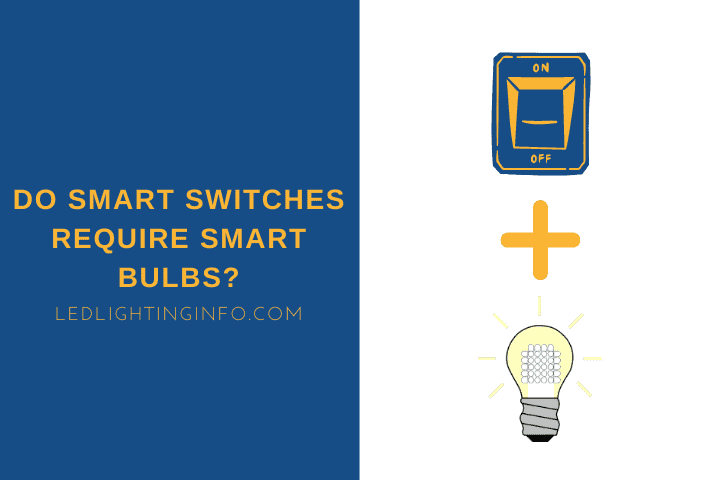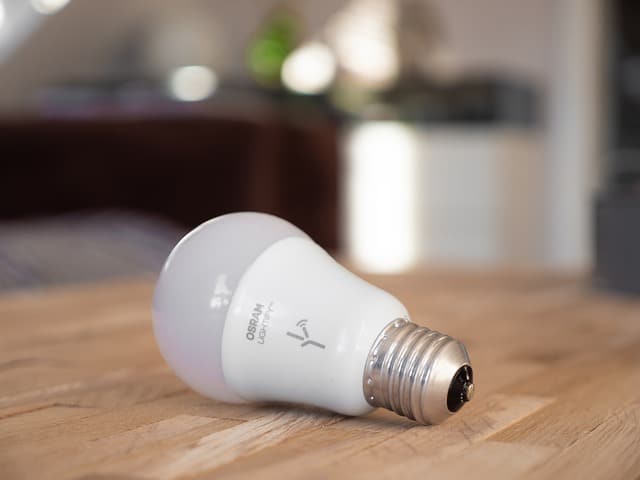Smart homes are awesome. It is literally that simple! The ability to control your home’s different elements, either by your voice or through your phone, is empowering and exciting.
And smart switches are one of the quickest and most affordable ways to join the smart home revolution.
In fact, they are amongst the most popular smart home appliances out there, a sure-fire way to improve the quality of lighting in your home.
But one of the most common questions around smart switches is whether or not they require smart bulbs to work.
Suppose you’re new to this type of technology. In that case, that’s a perfectly understandable query to have, as there is a lot to get your head around when buying the perfect setup for your home.
In a nutshell, no, smart switches do not require smart bulbs. Smart switches can be used with smart bulbs, but it isn’t necessary as smart switches will work with any compatible bulb.
Below I want to answer this topic in much greater depth, along the way covering …
- Exactly what smart switches are and what they do
- Seeing how smart bulbs are different to smart switches
- Outlining which one might be the best choice for you
So stay tuned if you want to learn more!
What Do Smart Switches Do?
Smart switches allow you to gain greater control over the lighting in any room in your house.
They can connect up to all different bulbs in the room, and thus you can control everything in one go.
Smart switches usually come with one switch to dim and one switch for simply turning on and off.
Such as the Lutron Caseta (Amazon), which allows you to quickly and easily dim your lights or turn them on or off; all from one sleek switch panel.
The designs and backing plates can vary, and some are better suited for the existing switch plate you have in place.
The big difference is that they come with smart app compatibility, allowing you to fully customize the lighting from your phone.
Again, there is variation in the complexity of features offered through each company’s app.
Depending on the bulbs you have in place, different settings could work better and be used to fix issues such as flickering.
You can customize light fade speed, minimum and maximum brightness, as well as tap sequences. They can even assess energy usage.
Perhaps the most impressive thing about smart switches is that the one switch can control lights that are hardwired in (such as ceiling lights) and appliances plugged into the wall.
Just be aware that if you want to dim ordinary bulbs with a smart switch, then the bulbs themselves need to be dimming capable.
You’ll find that most modern LEDs can do exactly this, and some older fluorescent bulbs, but to be sure, you’ll need to check the packaging.
What Is The Main Benefit Of Smart Bulbs?
Smart bulbs’ main benefit is that they give you greater flexibility in creating a custom lighting environment.
This is because each bulb can have a different brightness, or even color, depending on the bulb you purchase.
You can even adjust how cool and soft the white light is throughout the day, effectively mimicking natural light inside of your home.
Smart bulbs can be used in any standard lighting fitting. Just be aware that some smart bulbs require a bridge, others can be controlled individually straight over WiFi.
The Philips Hue (Amazon), for example, does not require a bridge kit in order to get started. However having one allows you to expand bulbs in a future and to upgrade lighting both inside and outside your home.
Do Smart Switches Require Smart Bulbs?
No, but there are a few benefits to doing so …
Combining a smart switch with smart bulbs gives you the ultimate flexibility and creativity with your lighting.
For example, you can sync all lights to the one smart switch, including a mixture of hardwired lighting and standalone appliances plugged in at the wall.
With just one button, you can turn absolutely everything on and off!
You can combine smart switches and smart bulbs with your chosen voice assistant.
For example, if you use Siri, then be sure to pick up smart switches and smart bulbs that are Siri-compatible. The same applies to Alexa and Google Home.
Additional reading: Do Smart Bulbs Work Without WiFi?
Why Is Having Both Not Necessary?
Ultimately, the main appeal of both smart light switches and smart bulbs is the ability to control your lighting remotely.
Be that from your phone or even your chosen smart home device, like Alexa or Google Assistant.
However, unless you’re happy to spend a fortune upgrading the bulbs and switches throughout your home, I would urge you to consider the benefits each offers and tailor your choice to each room in your home.
If you were to install smart switches and smart bulbs in every room, you would spend a lot of money and likely fail to make full use of everything installed.
Before we get to more specific scenarios, let me quickly compare the costing of smart switches and smart bulbs.
The earlier mentioned Lutron switch has a wattage rating of 150W for LEDs, meaning that you can connect about fifteen 10W LEDs.
If you were to opt-in for lower wattage LEDs, you would be able to connect a few more.
Now, the average price of a smart switch like Lutron is about $70.
If you want to achieve the same effect with smart bulbs, say you would need 15 on them, and the price of a better quality smart bulb is roughly $20, which makes a total of $300.
Can you see that difference now?
Let’s dig into this issue a little further …
Also read: Do Smart Lights Work With Dimmer Switch?
Which Is The Right Choice For You?
This comes down to the environment you are trying to light; let’s look at 2 examples.
First up, your kitchen. Here, you could have 10 or more main ceiling bulbs and a few other light fittings.
The main purpose inside of your kitchen is cooking, so lighting needs to be practical and universal throughout the room.
So I would recommend you to pick up a smart switch. This can sync up to all bulbs throughout the room, allowing you to immediately dim or brighten the room depending on natural light outside.
This would be by far the most cost-effective option, as replacing 10 or more regular bulbs with smart bulbs is expensive, as you could have read earlier.
Let’s be honest; you would rarely use them to their full capacity anyway.
Now, look at your bedroom as the second example. Again, you have ceiling lights, but you also likely have a lamp on either side of the bed.
When you’re lying down in the evening, you may want to watch a movie, read a book, or simply chill out and listen to some music.
Depending on the mood, you will want to customize your lighting based on each appliance; and that’s where smart bulbs come in useful.
With something like the Philips Hue bulbs, you could adjust the color of each bedside lamp to fully adjust the look and feel of the room, depending on the mood you wish to create.
As there are fewer bulbs in your bedroom, replacing them won’t be too expensive, plus you get plenty of use out of them.
Further reading: Can Smart Lights Spy On You?
Final Words
Ultimately, the smart lighting solutions that you choose to purchase for your home are entirely dependent on you and your needs.
But it is essential to be aware that you do not need to buy smart bulbs to make a smart switch work.
Now over to you, do you have smart switches or smart bulbs in your home?
If not, which option are you leaning towards?
I’d love to hear your thoughts, so just drop me a comment below, and let’s talk further!




